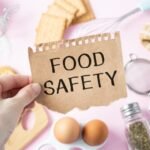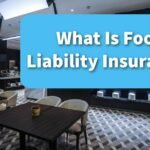In the food industry, the integrity of property and equipment is crucial for ensuring smooth operations, maintaining food safety, and delivering quality products to customers. Property and equipment insurance plays a pivotal role in protecting food businesses from financial losses associated with damage or loss of their assets. This coverage helps safeguard not only the physical premises but also the vital machinery and equipment necessary for daily operations. In this article, we’ll explore the importance of property and equipment insurance in the food industry, its key features, and how it benefits businesses.
What Is Property and Equipment Insurance?
Property and equipment insurance is a specialized type of coverage designed to protect businesses from financial losses resulting from damage or loss of their physical assets. In the context of the food industry, this insurance covers a range of assets including buildings, machinery, equipment, and inventory. It provides financial protection against various risks such as fire, theft, vandalism, and natural disasters that could disrupt operations and lead to significant costs.
Why Property and Equipment Insurance Is Essential for Food Businesses
- Protects Against Property Damage
Food businesses operate in environments where property damage can occur due to various factors, including fires, floods, and storms. Property insurance covers the cost of repairing or replacing damaged buildings and structures, ensuring that businesses can resume operations quickly and minimize downtime. - Safeguards Critical Equipment
Equipment used in food preparation, cooking, and storage is essential for maintaining product quality and safety. Equipment insurance covers the cost of repairing or replacing damaged machinery, such as ovens, refrigerators, and mixers, helping businesses avoid interruptions in their operations. - Covers Loss of Inventory
Food inventory is a significant asset for food businesses and can be vulnerable to damage or spoilage. Property and equipment insurance includes coverage for inventory loss due to events such as fire or refrigeration failure, helping businesses recover their financial losses and maintain supply. - Mitigates Financial Risks
The financial impact of property or equipment damage can be substantial, particularly for small to medium-sized food businesses. Insurance coverage helps mitigate these risks by covering repair costs, replacement expenses, and other related financial burdens. - Ensures Business Continuity
Disruptions caused by property damage or equipment failure can impact a business’s ability to operate and generate revenue. Property and equipment insurance supports business continuity by providing the financial resources needed to address issues promptly and return to normal operations.
Key Coverage Areas in Property and Equipment Insurance for Food Businesses
- Building Coverage
Description: Covers damage to the physical structure of the business premises, including walls, roofs, and floors, caused by perils such as fire, storm, or vandalism.
Examples:- A kitchen fire damages the walls and ceiling of a restaurant. Building coverage helps pay for repairs and rebuilding costs.
- Severe weather causes structural damage to a food processing facility. Insurance coverage assists with repairing the damaged areas.
- Equipment Coverage
Description: Provides coverage for the repair or replacement of essential equipment used in food production, preparation, and storage, including ovens, refrigerators, and food processors.
Examples:- A malfunctioning oven used in a bakery causes production delays. Equipment coverage helps cover the repair or replacement costs.
- A refrigerator failure leads to spoilage of inventory. Insurance coverage compensates for the damaged goods and repair of the equipment.
- Inventory Coverage
Description: Covers the loss or damage of food inventory due to events such as fire, theft, or equipment failure, including spoilage or contamination.
Examples:- A power outage causes food spoilage in a commercial freezer. Inventory coverage helps recover the cost of the spoiled goods.
- A break-in results in the theft of valuable food inventory. Insurance coverage compensates for the loss of stolen items.
- Business Interruption Coverage
Description: Provides financial support for lost income and ongoing expenses if the business is forced to close temporarily due to property damage or equipment failure.
Examples:- A fire damages the kitchen, leading to a temporary closure of the restaurant. Business interruption coverage helps replace lost revenue and cover ongoing expenses.
- Equipment breakdown results in a halt in production. Insurance coverage compensates for lost income and operational costs during the downtime.
- Extra Expense Coverage
Description: Covers additional expenses incurred to continue operations while repairs or replacements are underway, such as renting temporary equipment or premises.
Examples:- A food manufacturing plant suffers equipment damage, and temporary equipment needs to be rented. Extra expense coverage helps pay for the rental costs.
- A restaurant must rent a temporary location while repairs are made to the main building. Insurance coverage assists with the costs of the temporary premises.
How to Choose the Right Property and Equipment Insurance Policy
- Assess Your Assets and Risks
Evaluate the specific assets and risks associated with your food business, including the types of property, equipment, and inventory you have. This assessment will help determine the appropriate coverage limits and policy options. - Compare Insurance Providers
Research and compare different insurance providers to find one that offers comprehensive property and equipment coverage. Consider factors such as coverage limits, exclusions, and additional endorsements that may be relevant to your business. - Consult with an Insurance Specialist
Work with an insurance specialist who has expertise in the food industry. They can provide valuable insights, help tailor your policy to your specific needs, and ensure you have adequate protection. - Review and Update Your Policy Regularly
Regularly review and update your property and equipment insurance policy to reflect any changes in your business operations or asset values. This ensures that your coverage remains current and adequate.
Conclusion
Property and equipment insurance is a vital component of risk management for food businesses, offering protection against financial losses related to damage or loss of physical assets. By covering building repairs, equipment replacement, inventory loss, business interruption, and extra expenses, this insurance helps safeguard your business from unforeseen risks and supports your ability to recover from disruptions. To ensure you have the right coverage, assess your assets and risks, compare insurance providers, consult with an expert, and regularly review your policy. With the right property and equipment insurance in place, you can operate your food business with confidence, knowing that you are protected against potential financial setbacks.



